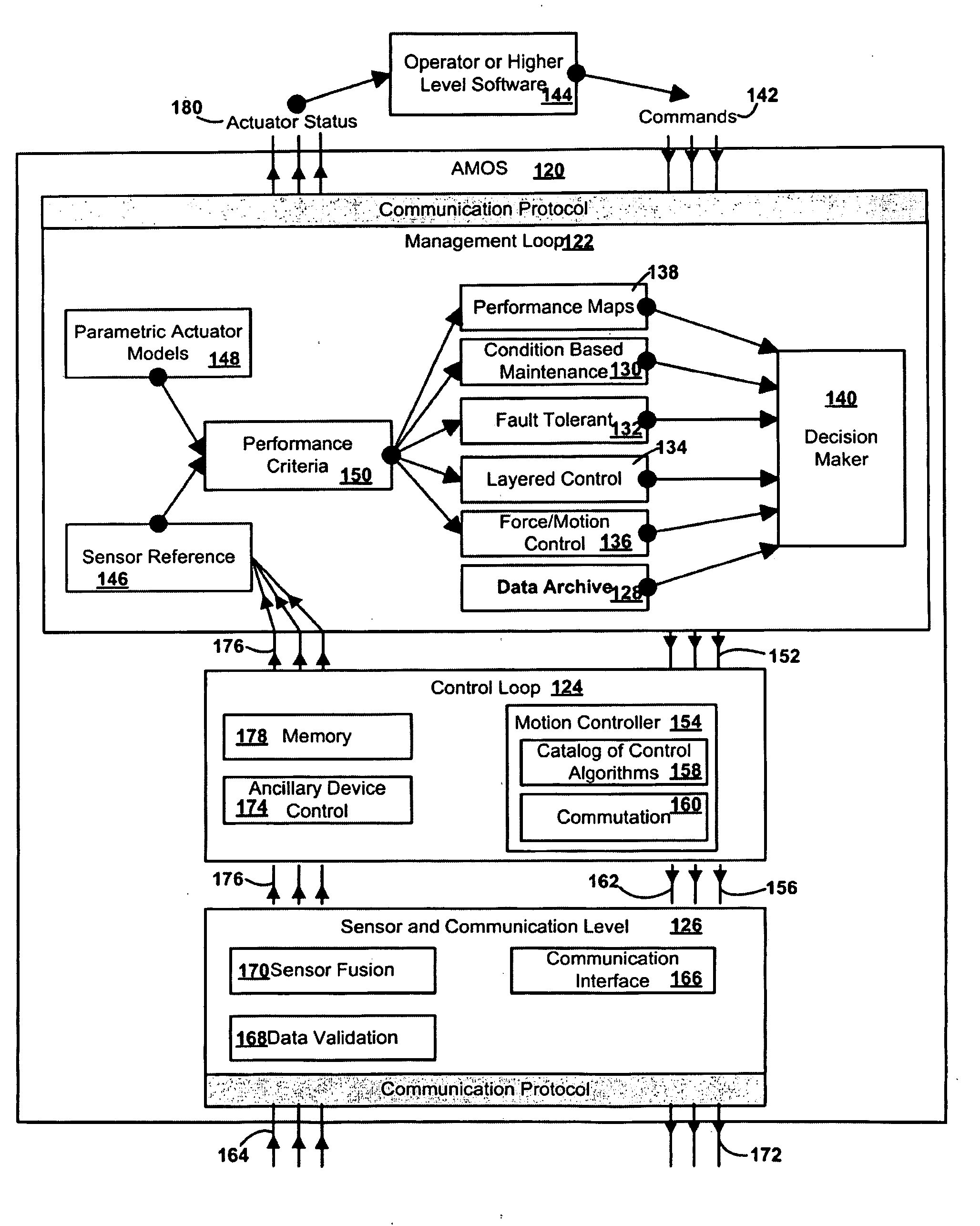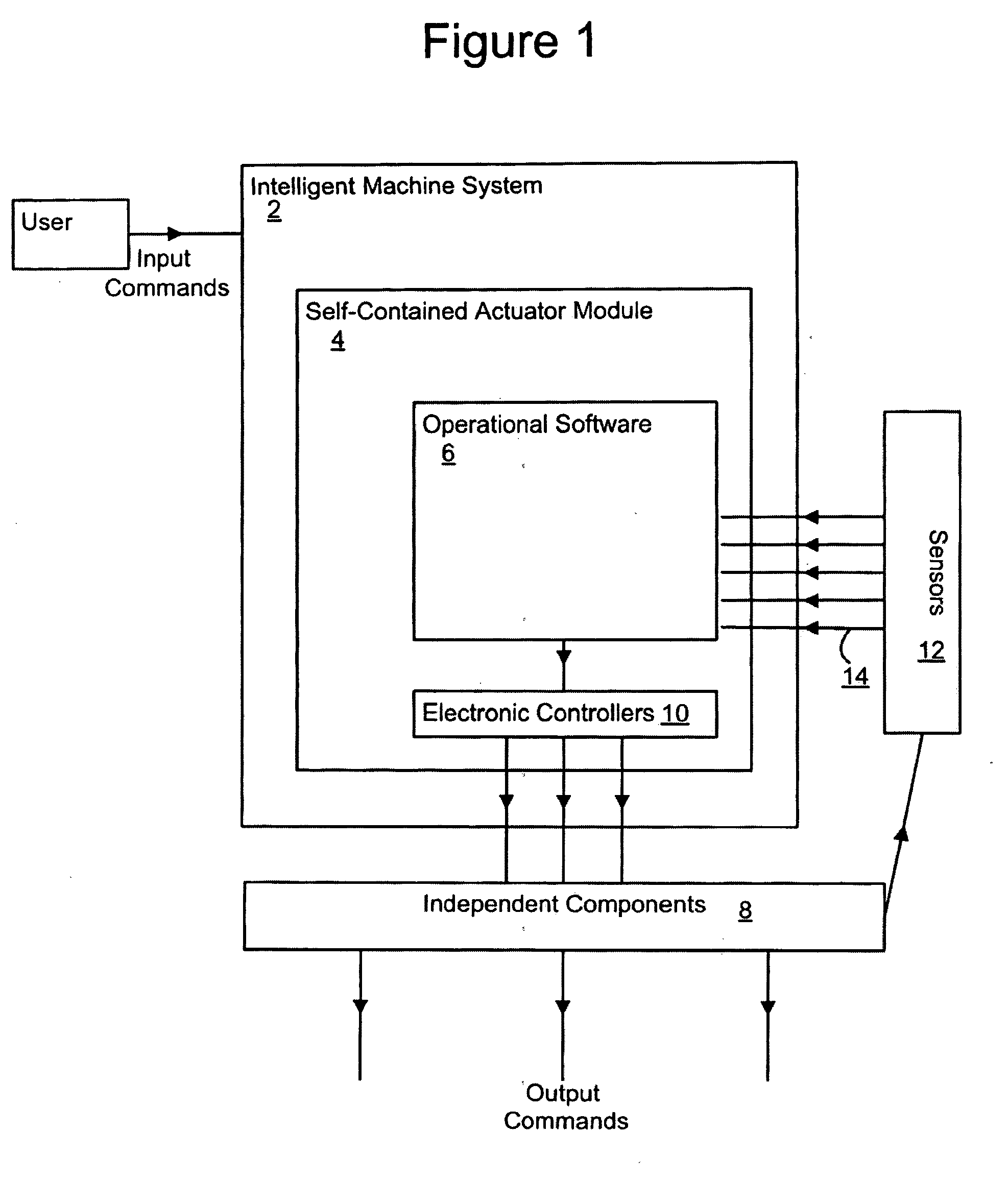Performance maps for actuator intelligence
- Summary
- Abstract
- Description
- Claims
- Application Information
AI Technical Summary
Benefits of technology
Problems solved by technology
Method used
Image
Examples
Embodiment Construction
[0022]The present disclosure, represented in FIG. 1, is a four level fault tolerant architecture for the intelligent machine system 2 based on the basic component of a self-contained actuator module 4 with standardized interfaces. This system architecture then organizes all of the operational software 6 development to not only make it universal for all configuration under this architecture but to also make high performance, fault tolerance, and condition-based maintenance possible. Similar generality is also present in the actuator itself. At the system level, there are four independent structural layers, and the same will occur within the actuator. Multiple independent components 8 (magnetic circuits, poles, magnets, etc.) will be structured and prioritized by advanced electronic controllers 10 (in hundredths of a millisecond) which are in themselves redundant and reconfigurable. Multiple sensors 12 monitor these components, and send Feedback 14 into the operational software 6. The...
PUM
 Login to View More
Login to View More Abstract
Description
Claims
Application Information
 Login to View More
Login to View More - R&D
- Intellectual Property
- Life Sciences
- Materials
- Tech Scout
- Unparalleled Data Quality
- Higher Quality Content
- 60% Fewer Hallucinations
Browse by: Latest US Patents, China's latest patents, Technical Efficacy Thesaurus, Application Domain, Technology Topic, Popular Technical Reports.
© 2025 PatSnap. All rights reserved.Legal|Privacy policy|Modern Slavery Act Transparency Statement|Sitemap|About US| Contact US: help@patsnap.com



